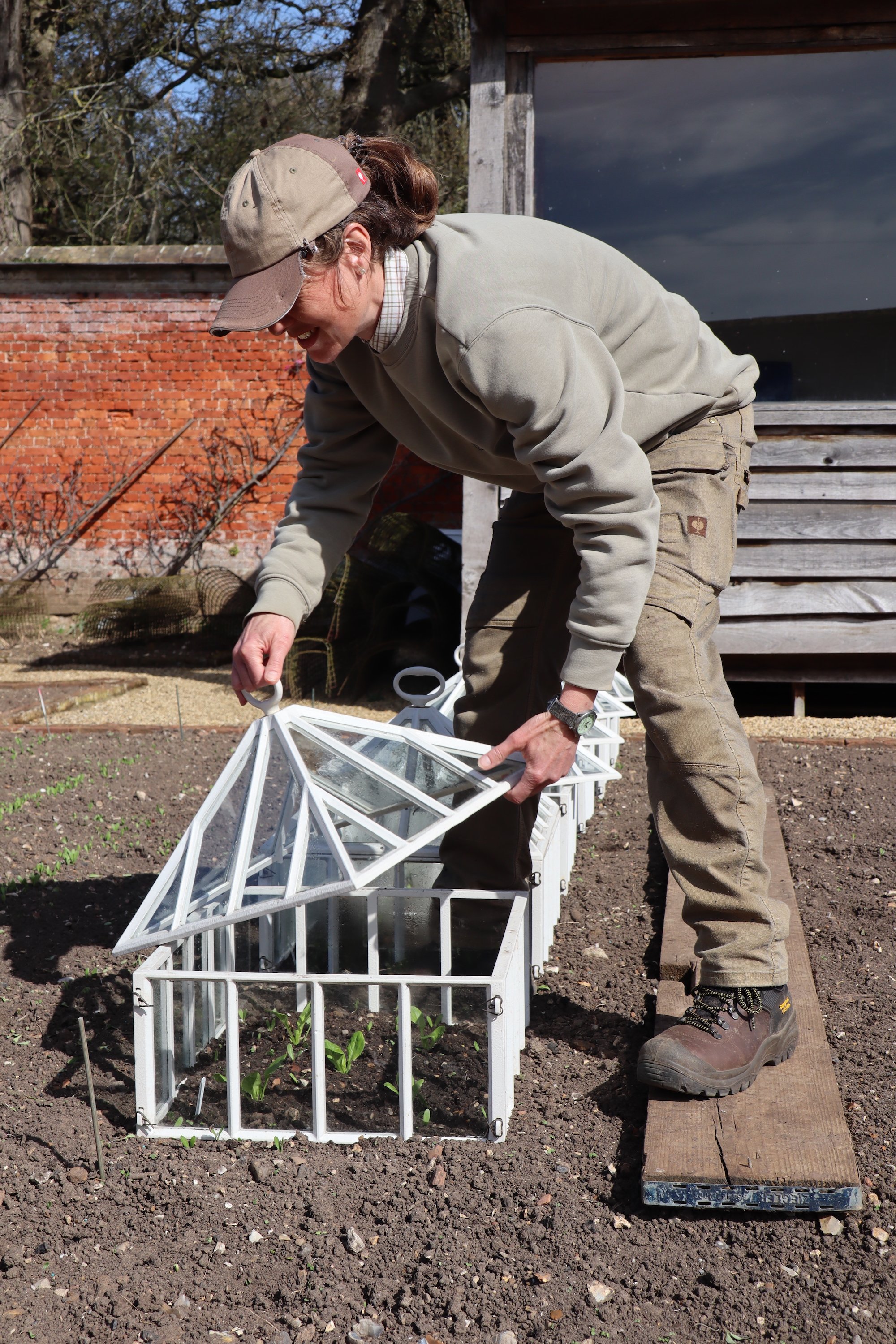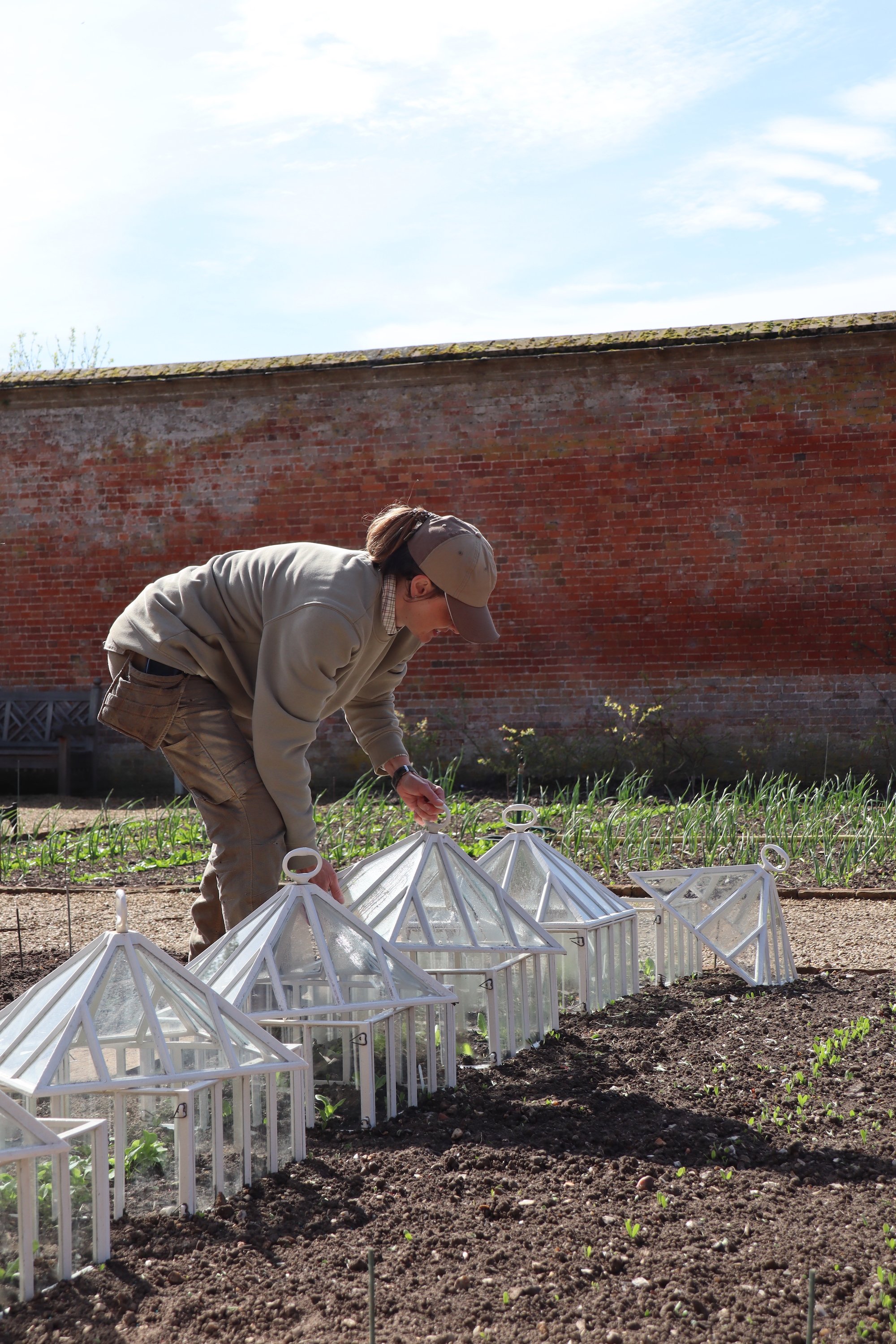Spring Cloche Gardening in the Walled Garden at Holkham Hall
Kirsty, the kitchen gardener at Holkham Hall in Norfolk, shares how she uses cloches to germinate, protect and grow.
How does a working walled kitchen garden use cloches to increase productivity? This is the question we asked Kirsty, who heads up the Holkham Hall kitchen garden. In this garden, produce is grown year round for the main house, in addition to the restaurant and cafés they have on the estate.
“One of the delightful parts of our arsenal here are the Claverton Cloches.” says Kirsty. “They're great for a bit of early warmth. So settle them early, get the soil warmed up and then transplant. Or, if you're brave, you can even direct sow.”.
Holkham Hall, located a stone’s throw from the breathtakingly-beautiful north Norfolk coastline, has an impressive walled garden dating back to the Georgian period.
At 6 acres, it is large, and contains not only a productive kitchen garden, but also a cutting flower garden, an ornamental garden (with themed “Spring”, “Summer” and “Winter” beds), a vineyard, lawns for events and an impressive collection of period glasshouses.
We visit in mid-April, and at first glance the kitchen garden looks bare. Kirsty explains that in a few weeks time it will be almost unrecognisable, and will be bursting with produce. Indeed, upon closer inspection, one realizes that the beds are actually covered in tiny shoots emerging from the soil, proof that there is much going on under the surface. Asparagus tips, alien as ever, are bursting through the earth, and the fine tips of nascent onions blow gently in the spring breeze.
Naturally, the coastal location means the winds can be strong, but as Kirsty explains “the other thing that's great about these is that they're heavy. So the wind isn't going to do any damage and of course you've got the glass which you need to be careful with.”
“The thing that's great with these of course is you've got all the protection you need from any cold nights and cold winds, but if it's getting warm in the day, which of course it will do from now on, you can vent them. So you just pick the lids up, give them a turn and let some air circulate. Or, on a really nice hot day, or if you're daring and you want some rain on your plants, of course you can just take the lids off and park them against the base.”
Kirsty recommends succession planting, leaving around two weeks between planting lots of seedlings of the same vegetable. This is for two main reasons; it spreads out the harvest (I’m sure many of us know the pain of too many courgettes ripening at once!) and effectively hedges you should you lose a batch of seedlings to pests or inclement weather. “In our cloches this year at the moment, we've got some early lettuces and even some radishes”
We asked if pests are a problem and Kirsty laughs, explaining that there is no end to the hungry visitors, evening listing a peacock amongst the uninvited. She reckons about two thirds of what is planted is lost, although confidently states that the cloches are “pheasant proof, peacock proof, rabbit proof, slug proof.”
Designed by Samuel Wyatt in 1790, the walled garden has a distinctive period feel. Glasshouses are a dominant feature, from sunken melon pits to towering vine houses, and ranging in age from a Georgian citrus house to a 1929 messenger greenhouse.
Most of the glasshouses have been painstakingly restored, a rather rare sight nowadays, as few gardens on the scale can afford the eyewatering cost of refurbishment. The result, however, is breathtaking and provides the garden with architectural interest and a heritage feel. The cloches, being from the Victorian period, look right at home in the space, and mirror the design of the glasshouses.
Speaking of the cloches, Kirsty concludes, “It's all here in one package. They're very beautiful things to work with. And they work jolly well as a horticultural product.’
If, like us, you are a walled kitchen garden enthusiast, or just enjoy beautiful gardens, we thoroughly recommend a visit. holkham.co.uk









